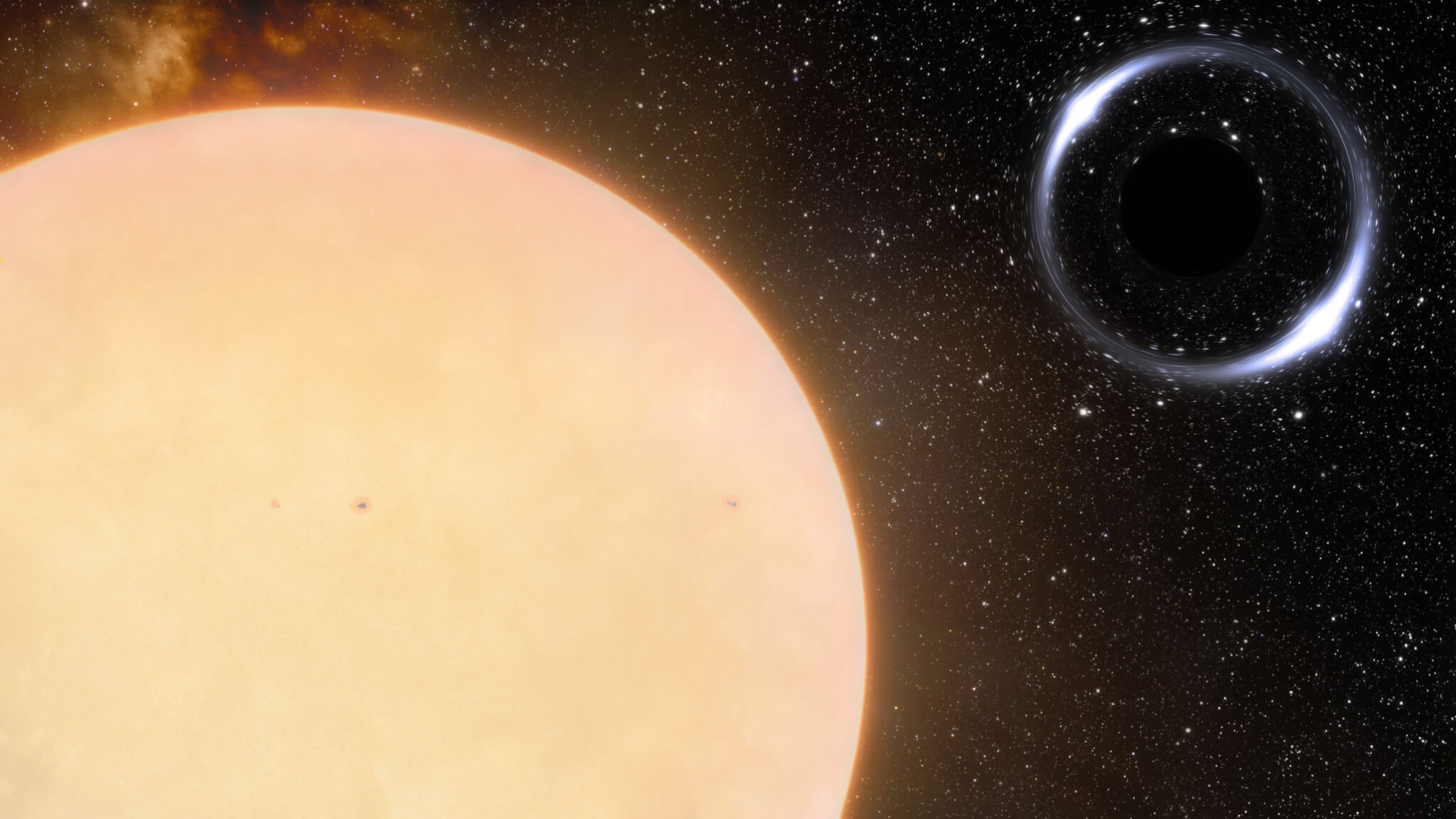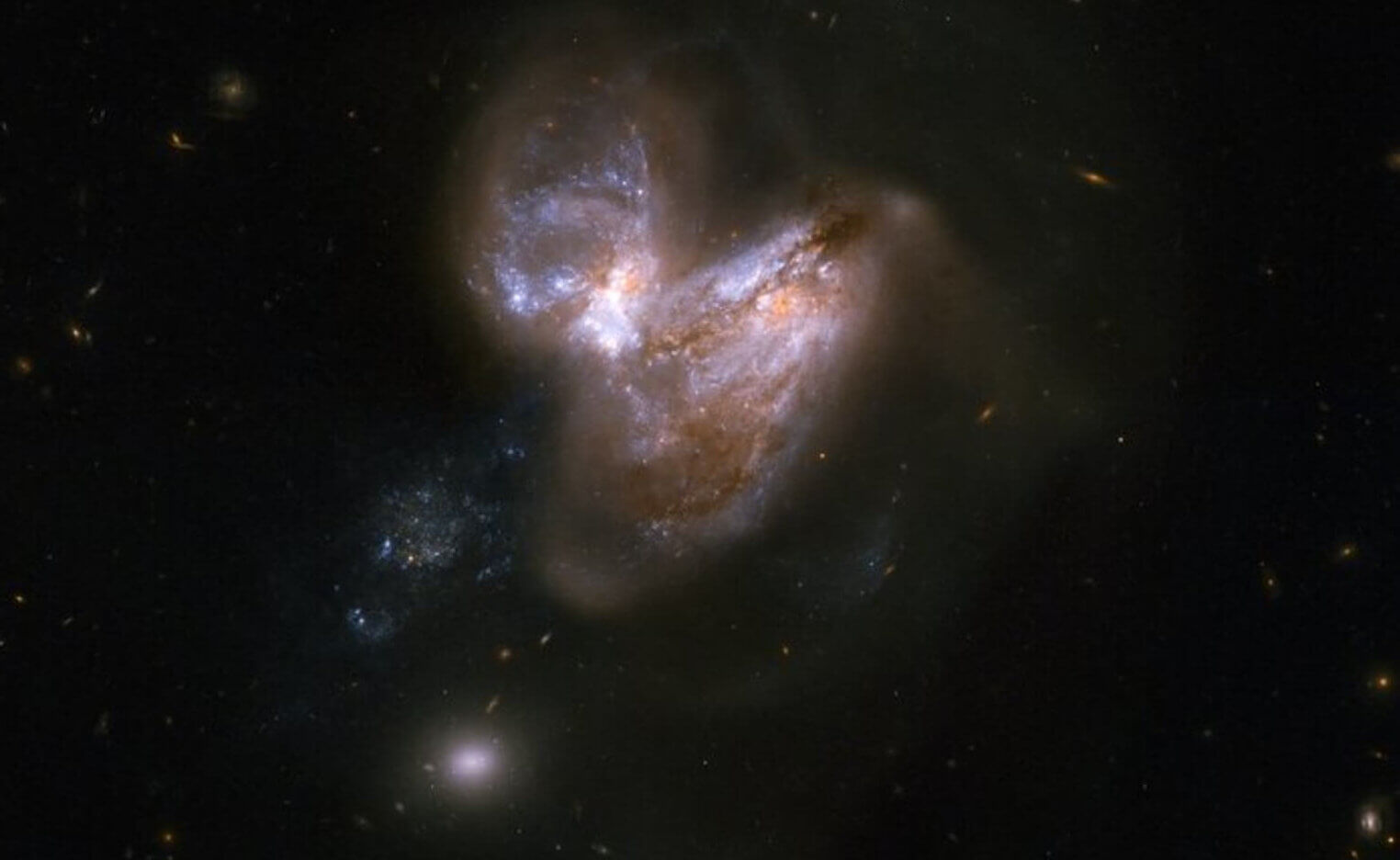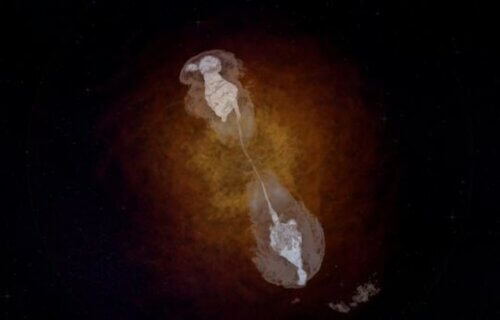NEW YORK — The cosmic mystery behind gamma-ray bursts (GRBs) in space may finally be over. Using advanced computer simulations and theoretical calculations, astronomers have presented a unified model suggesting that some long-lasting GRBs originate from cosmic mergers resulting in a newly formed black hole surrounded by a disk of material.
Previously, astronomers believed that long GRBs were primarily produced when massive stars collapsed. However, the new model indicates that these GRBs can also occur from the merger of two dense objects, such as neutron stars or a black hole and a neutron star. This revelation helps explain recent long GRB observations that didn’t fit the collapsing star scenario.

“Our findings, which connect observations with underlying physics, have unified many unresolved mysteries in the field of gamma-ray bursts,” says study lead author Ore Gottlieb, a research fellow at the Flatiron Institute’s Center for Computational Astrophysics (CCA) in New York City, in a media release. “For the first time, we can look at GRB observations and know what happened before the black hole formed.”
Gamma-ray bursts, first detected in 1967, are among the most luminous and violent events in the cosmos. Their origins have long puzzled astronomers. Traditionally, GRBs are classified into two types: short bursts lasting less than a second and longer ones persisting for over 10 seconds. While short GRBs are linked to the merging of compact objects, long GRBs were thought to arise from the collapse of massive rotating stars. However, recent observations of unusual long GRBs hinted that other processes might be at play.
To explore this possibility, Gottlieb’s team ran sophisticated simulations on supercomputers, tracing the events from the close orbit of two compact objects through the jets’ journey far from the merger site. This comprehensive approach enabled the researchers to make minimal assumptions about the underlying physics.
The simulations revealed that the peculiar long GRBs observed in 2022 were likely produced following the merger of two compact objects, leading to the formation of a black hole encircled by a large accretion disk. This disk, composed of magnetically charged material left over from the merger, is capable of generating long GRBs.
“If we see a long GRB like the ones observed in 2022, we now know that it’s coming from a black hole with a massive disk,” explains Gottlieb. “And knowing there is a massive disk, we now can figure out the ratio of the masses of the two parental objects because their mass ratio is related to the properties of the disk. For example, the merger of unequal-mass neutron stars will inevitably produce a long-duration GRB.”

The team hopes to extend their model to identify the origins of short GRBs. These bursts could result from black holes with smaller accretion disks or from a hypermassive neutron star — an unstable star form that quickly collapses into a black hole but emits short GRBs before its collapse.
With the Vera C. Rubin Observatory set to begin operations in early 2025, astronomers expect to gather more data on GRBs, allowing for further refinement of the simulations and a deeper understanding of these cosmic events.
“As we get more observations of GRBs at different pulse durations, we’ll be better able to probe the central engines powering these extreme events,” concludes Gottlieb.
The study is published in The Astrophysical Journal Letters.
You might also be interested in:
- Grab some shades and feast your eyes on the ‘BOAT’ — brightest gamma-ray burst of all time!
- Are mysterious radio signals in space coming from aliens? Scientists believe they’re actually ‘starquakes’
- Mysterious aurora-like radio emissions discovered coming from the Sun
